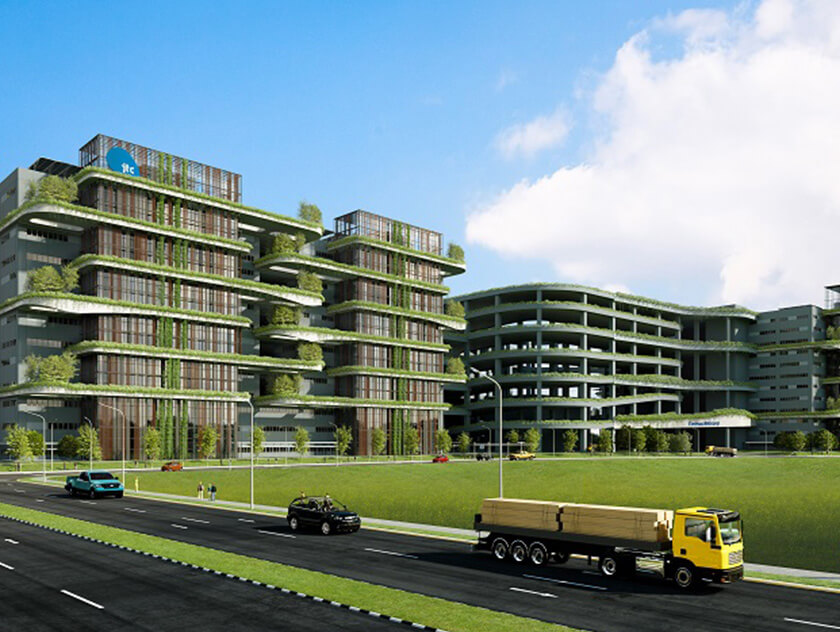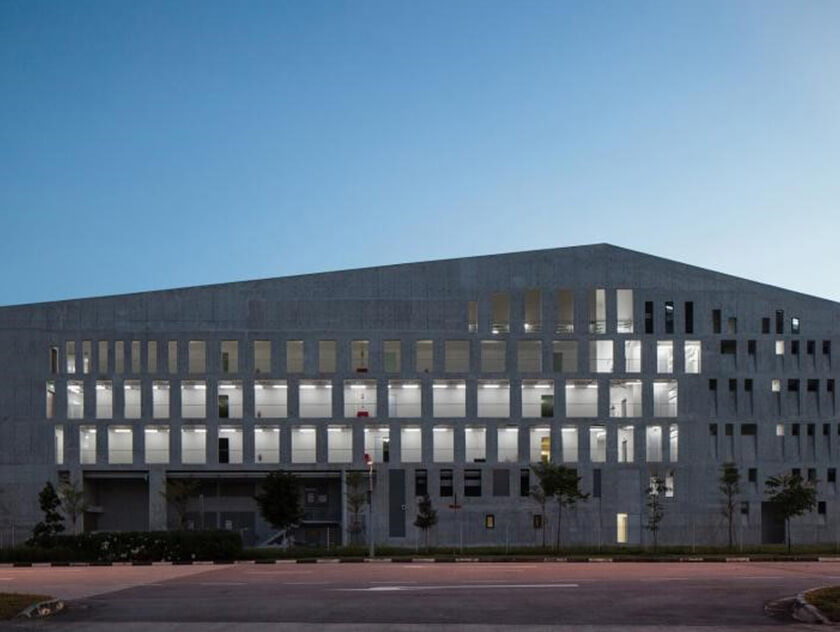SINGAPORE – Industrial developer JTC Corporation is making plans to retain a vegetated hill at the site for the upcoming Woodlands Gateway development, The Straits Times has learnt.
The forested area is slated to be cleared from 2026 to build an employment, commercial and manufacturing hub to tap the Johor Bahru-Singapore Rapid Transit System (RTS) Link.
ST reported in August that some 10.4ha of forest in Woodlands, about the size of 15 football fields, could be felled, according to an environmental impact assessment.
The report found that higher temperatures in the area are likely due to the loss of forest cover and the presence of new buildings.
The raised temperatures arising from the urban heat island effect are expected to be the most pronounced at night, when trapped heat is released from urban structures, added the report by consultancy DHI Water and Environment.
JTC’s group director of land planning and redevelopment, Ms Jan Seow, told ST in late October that the report had assumed that the vegetation would be cleared, but the agency is still in the process of deciding what can be kept.
She said the agency values nature as an asset as it is aware of the cooling effect of trees, besides the benefits of conserving nature.
“It is in our fundamental belief when we plan for our natural estates that we try to go for a win-win situation because greenery itself can address some adverse aspects of development,” Ms Seow said.
“Retaining this natural heritage is also a win for workers and residents because trees and some of these natural elements can address the urban heat island effect, give visual relief from the typical concrete buildings and ensure sustainability.”
JTC aspires to find a balance that preserves nature, in its original or re-planted form, without adversely compromising on the creation of jobs, she added.
“For now, we are trying to keep the hill. We don’t know to what extent it will be kept, but we definitely want to keep some of these elevated levels,” Ms Seow said, adding that the agency has committed to not flattening the hill.
JTC intends to conduct a technical study on how the hill can be kept.
Ms Seow said the Government’s master developer for industrial spaces has evolved in its approach to developing natural spaces since Singapore’s early years as a young nation.
In the 1960s and 1970s, hills were flattened and swathes of land were built over to quickly create industrial spaces that could bring down high unemployment rates, she said.
“This is not the same today, when we are already a developed nation. There is still a need to be fast, but we add on different layers of complexity.”
JTC’s first attempt to incorporate nature in its urban developments manifested through the planning of one-north, according to Ms Seow.
London-based Zaha Hadid Architects was appointed as the research hub’s masterplan consultant in 2001, after it won a global competition with its unconventional design that embraced the 200ha area’s many hills.
Another key turning point for the developer came in 2021, after the unauthorised clearance of a forested area in Kranji for JTC’s Agri-Food Innovation Park made the headlines.
Investigations into the case found that officers from JTC and its consultant, CPG Consultants, had acted in gross violation of wildlife-related requirements that had to be met before the trees could be felled.
The officers were later fined between $20,000 and $30,000 each.
Said Ms Seow: “With the incident, it became an opportunity to relook how we could do things in a more deliberate and thoughtful way.”
The incident, which was debated in Parliament and before the court, spurred the developer to strengthen its processes and capabilities in land-clearance projects with four measures.
They include the creation of an environmental planning and design unit, and a biodiversity and environmental advisory panel in JTC to give feedback on projects that could have a significant environmental impact.
Convened in 2022, the panel comprises close to 10 environmental conservation and biodiversity experts from nature groups and universities, said Ms Seow.
On the development of Woodlands Gateway, the experts had given views that ranged from calling for the preservation of the site to giving the green light for its development due to the area’s lack of scientific significance.
“Our whole point of having a panel is to hear different views, and then we see what we can do,” said Ms Seow.
“Because sometimes, different people say different things. Even if their outcome is the same, they have certain insights that we can still use.”
Commenting on JTC’s plans for the site, forest ecologist Shawn Lum said the developer had done its due diligence by carrying out an environmental impact assessment and appointing a respected consulting firm for the site.
“On the other hand, any site, even if it is not well connected to other green patches, has biodiversity value and much potential if it is a site of this size,” added the senior lecturer at NTU’s Asian School of the Environment.
“Birds that frequent the forest canopy and other mobile creatures and plants can establish in the area even if ground-dwelling or canopy species would not be expected to be established there.”
Considering these factors, Dr Lum recommended that some vegetation be retained for biodiversity, as well as the planting of native species to support these green areas.
He said: “If one looks at recent JTC projects, there is a willingness, a proactive approach even, to retain or, if required, create pockets of natural habitats.
“There is no pretence to preserving large wild spaces, but there is a clearly articulated pledge to do what is possible within the bounds of the national development agenda, and to explore and implement measures to realise the biodiversity contributions of JTC projects.”
Source: The Straits Times © SPH Media Limited. Permission required for reproduction.

